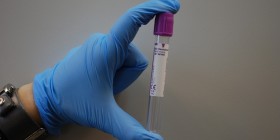Does the momentum of light increase or decrease when it passes through a material? This question, which formed the crux of a debate between two German physicists in the early 20 Century finally sees the answer recreated in a lab in Mohali.
Ever since the scientists Hermann Minkowski and Max Abraham came up with contradicting equations that both seemed to be supported by contradicting experimental data, the ‘controversy’ has raged on without a solution as equipment failed to be sensitive enough to detect the light-induced tiny deformations at the interface between air and water.
However, using an indigenous experimental set-up, researchers from the Indian Institute of Science Education and Research (IISER), Mohali, have achieved a breakthrough that shows that Minkowski was right — light does gain momentum as it enters another medium.
The “simple” setup involved shining a laser on a water drop to study the chain of events. The Helium-Neon laser was incident at the Total Internal Reflection — a critical angle where all the light is reflected, like a mirror.
Described in the journal Physical Review Letters published recently,theprobe laser produces high-contrast Newton’s ring (concentric circles of light and dark) on the water drop. The modulation of these fringes allowed the scientists to observe bulges in surface of heights lesser than 5 nano-metre precision.
On conducting the experiment at angles close to TIR, the water surface was found to be bent upwards due to the pressure exerted by the photon beam and was spread to 100 times beyond the area of the pumped laser. The analysis shows that the light particles actually gained momentum.
“For the first time in history, our experiment validates the century old Minkowski theory near Total Internal reflection…this novel and very sensitive technique has wide applications and can be used to precisely measure properties of light non-invasively,” says Kamal P. Singh, an IISER scientist who co-authored the paper with his colleague Gopal Verma.
Apart from solving a century-old problem, the equipment designed can aide in developing better biosensors, lab-on-chip devices, easily reconfigurable lenses and molecular imaging tools.






Leave a reply